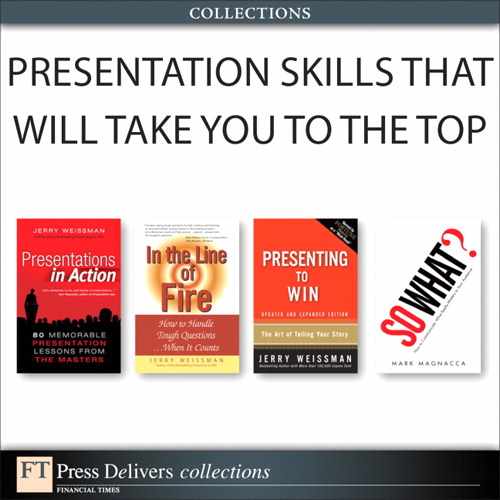18. Presentation Advice from Novelists I: Begin with the End in Mind, Then Write, Rewrite, and Rewrite
An article in the Wall Street Journal described the creative processes used by several different novelists. As you might expect, their methods were as varied as their literary styles, ranging from preferred writing materials to favorite venues, and even to the most productive times of day. But all the writers shared one common technique: They compose many drafts of their work.F18.1
One of the foremost proponents of rewriting is John Irving, the author of the bestselling novel The World According to Garp and 14 other novels. Mr. Irving states his method for all the world to see on his web site: “Rewriting is what I do best as a writer. I spend more time revising a novel or a screenplay than I take to write the first draft.”F18.2
Granted, novelists have the luxury of time that few businesspeople do, but rewriting is just as important in business because writing presentations is also a creative process. An indispensable part of the creative process is spaced learning, or the practice of pausing between drafts to enable the ideas to ripen. The opposite of spaced learning is cramming. Every professional writer, from novelists to journalists, understands and practices spaced learning; unfortunately, businesspeople, driven by the rapid pace of business, do not.
How can you apply spaced learning in business? Start with email. I have an ironclad rule about my electronic correspondence. For any email of substance: an after composing my message, I save it as a draft for an interval of anywhere from a few minutes to a few hours. Inevitably, whenever I return, I find words, phrases, sentences, or expressions that need a rewrite.
If spaced learning is helpful in the short form of email, imagine how much more helpful it can be in the longer form of presentations. Find the time to do multiple drafts of your presentation. If it works for novelists such as John Irving, imagine how it can work for you.
John Irving also offers another important piece of creative advice on another page of his web site: “I always begin with a last sentence; then I work my way backwards, through the plot, to where the story should begin.”
Mr. Irving is echoing the advice of what Aristotle called teleology—the study of matters with their end or purpose in mind. Today business author Stephen R. Covey stresses the importance of starting with the objective in sight, one of The Seven Habits of Highly Effective People, his bestselling book. Whenever you start to develop any presentation, always begin with your end in mind. Decide on your goal or call to action, and then build your presentation with information to support that goal.
Another novelist among those interviewed for the Wall Street Journal article had additional advice about the creative process that is applicable to presentations, and you can find her techniques in the next chapter.
